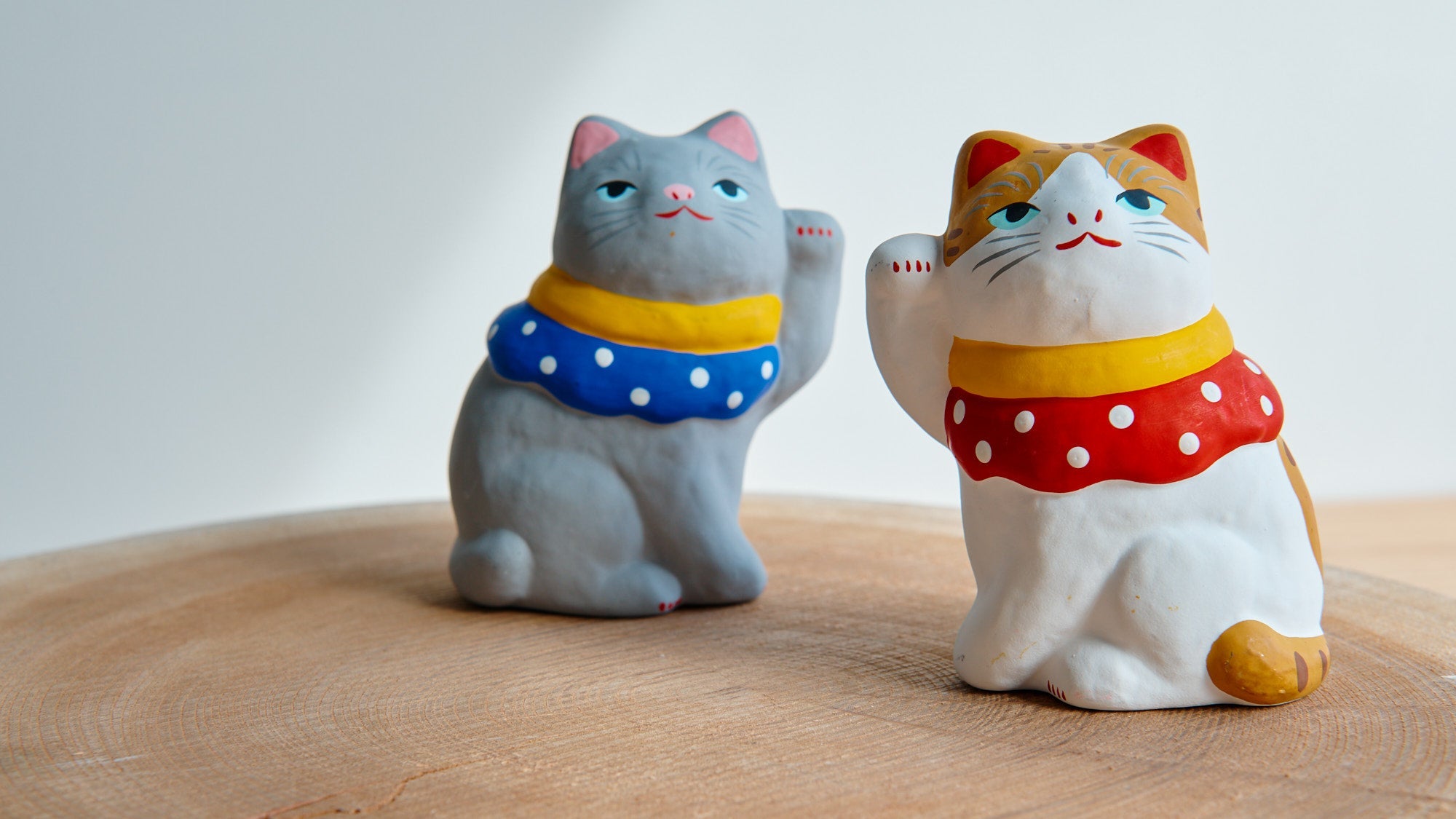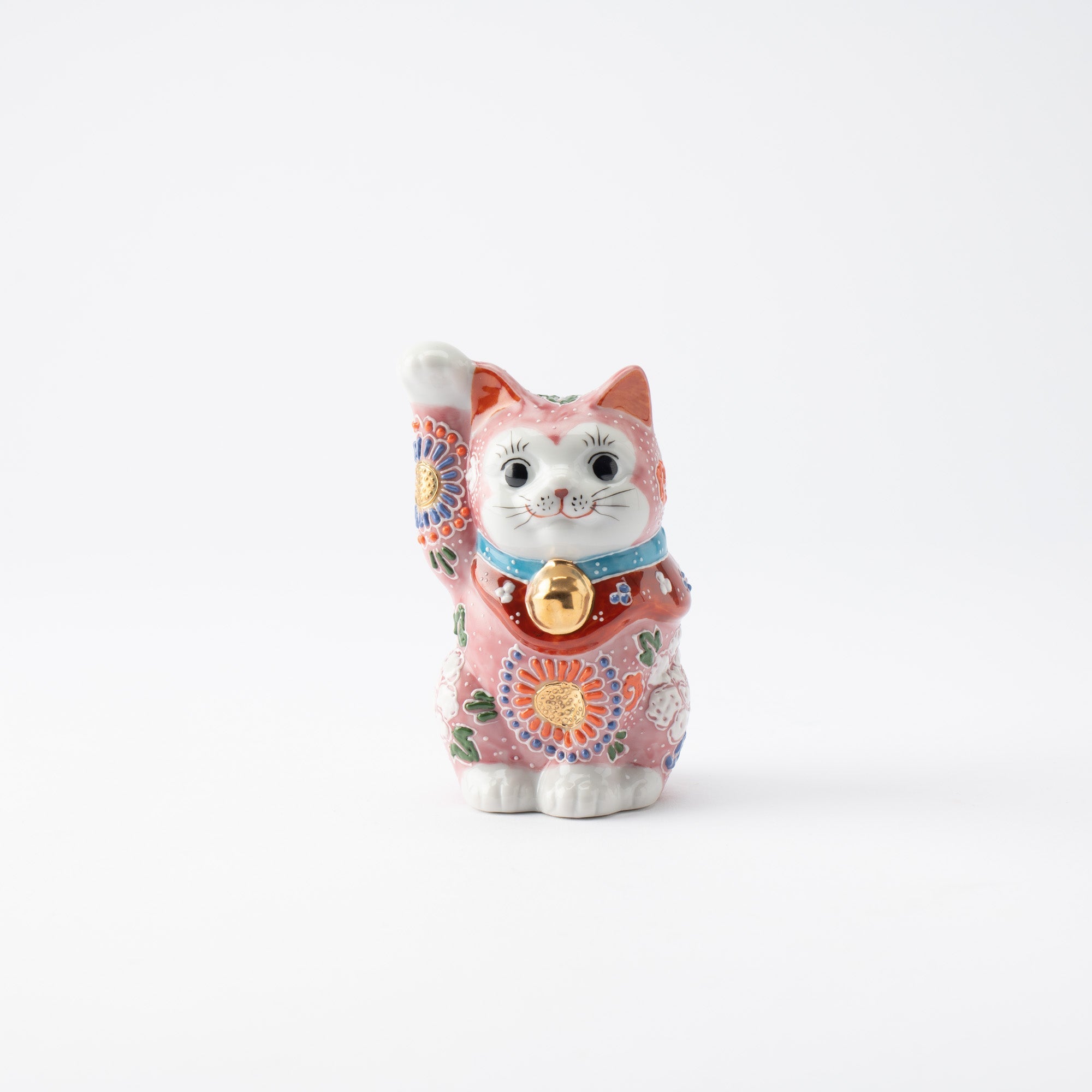
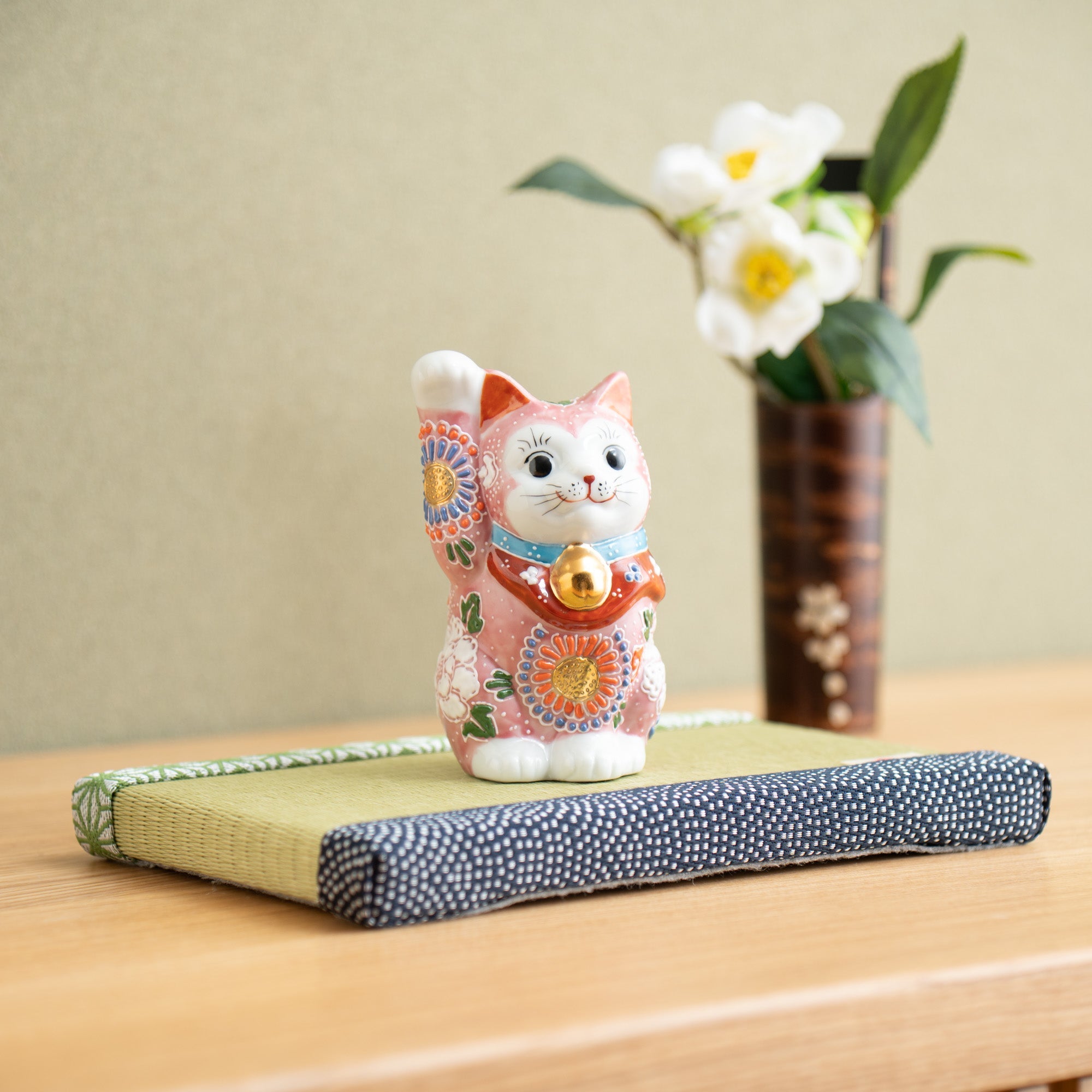
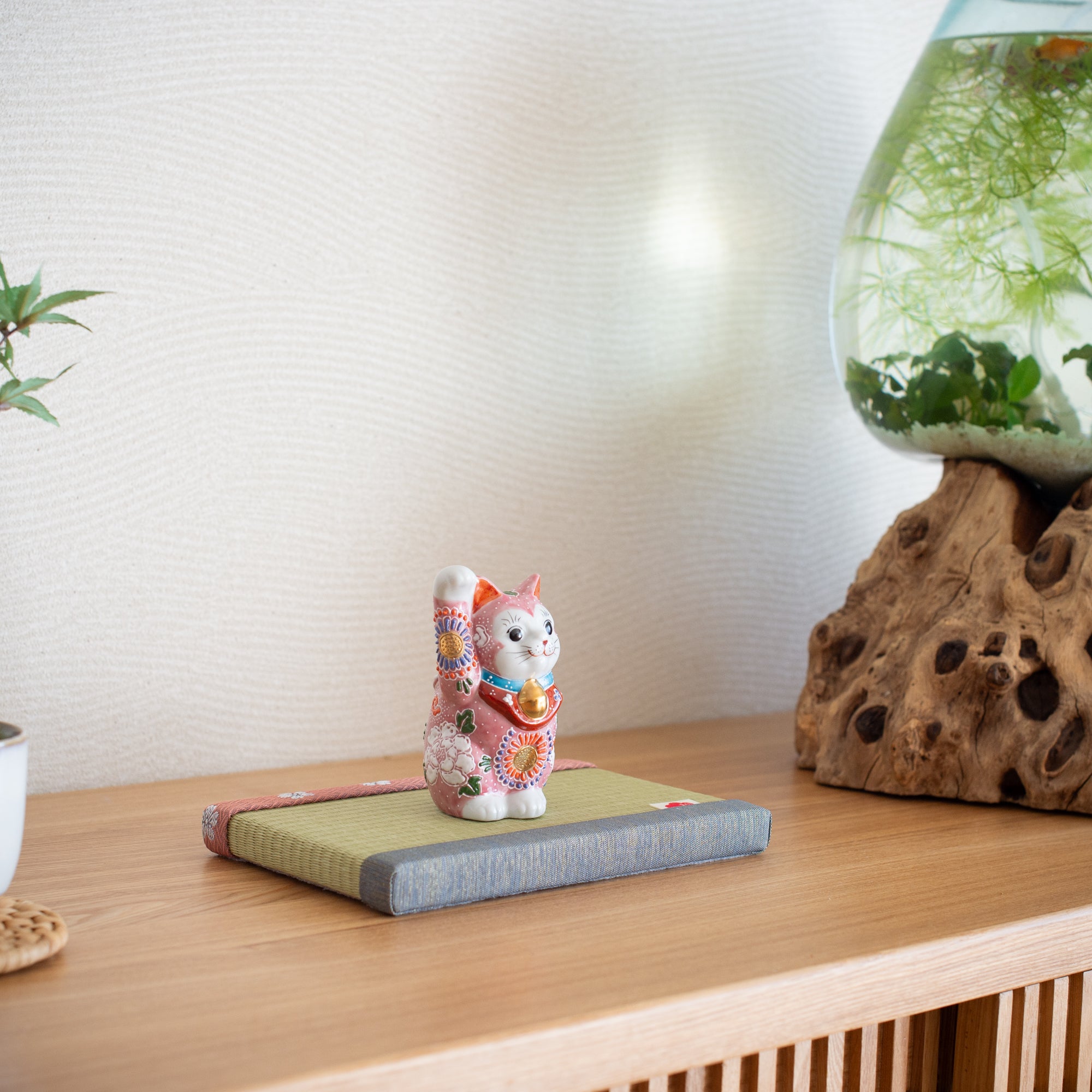
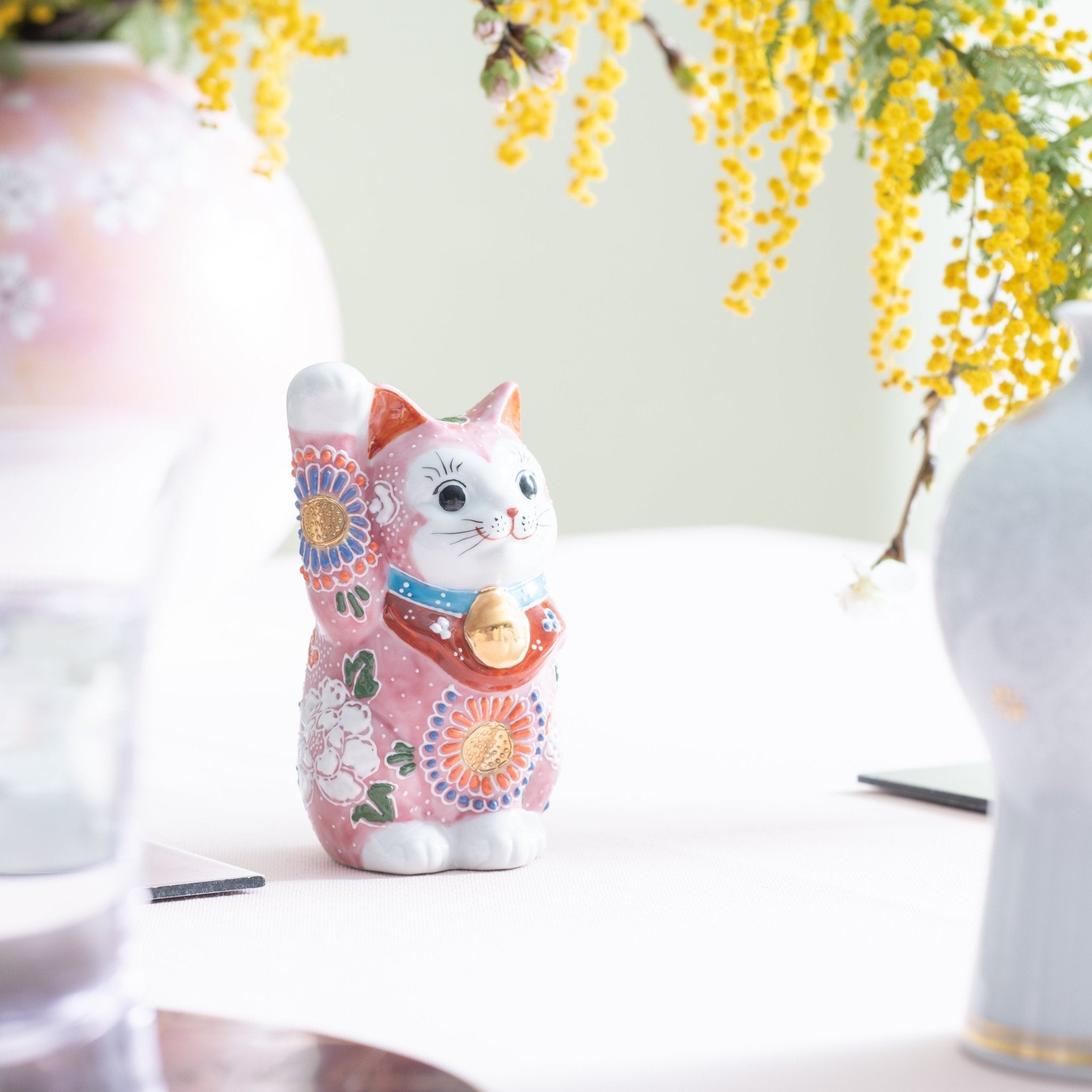
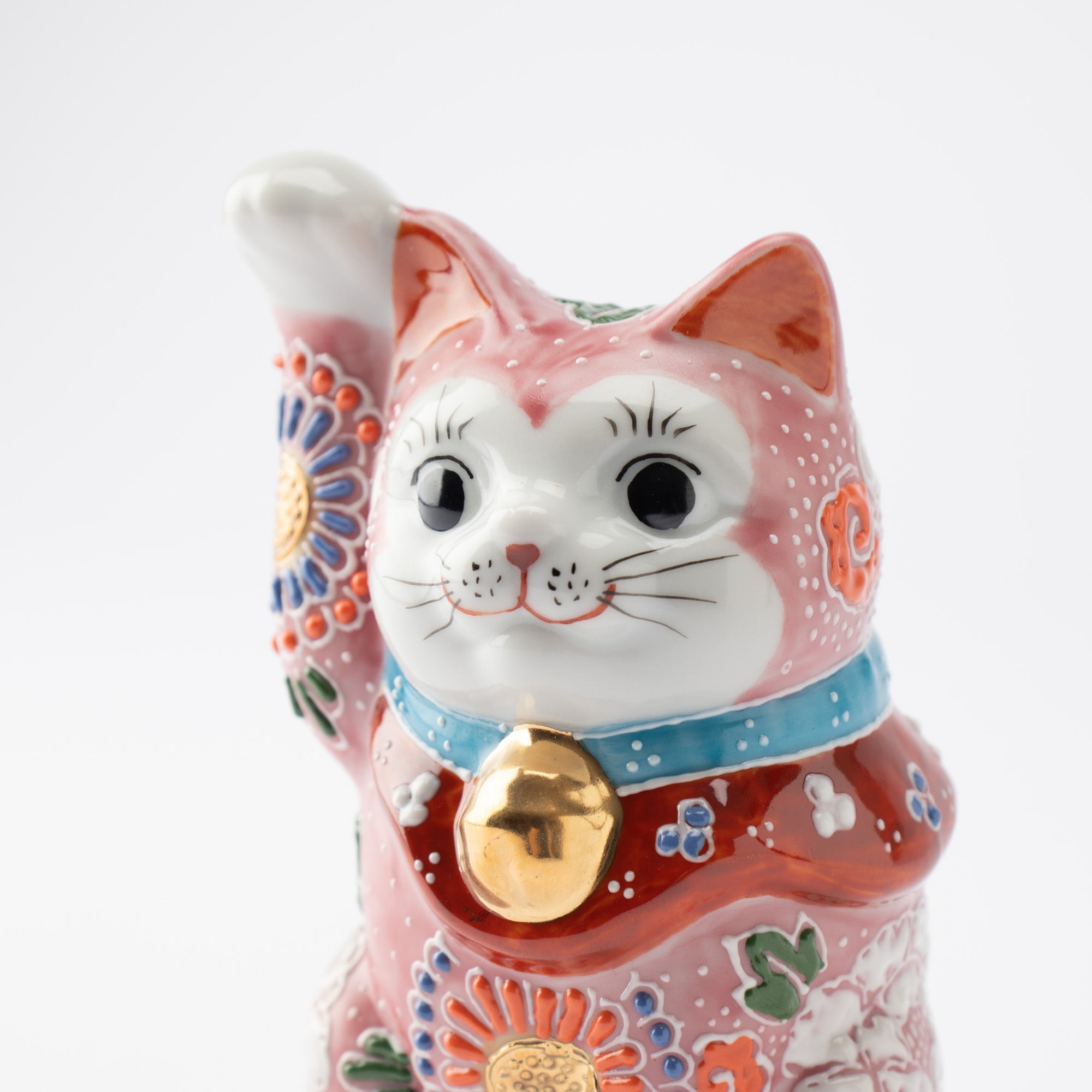
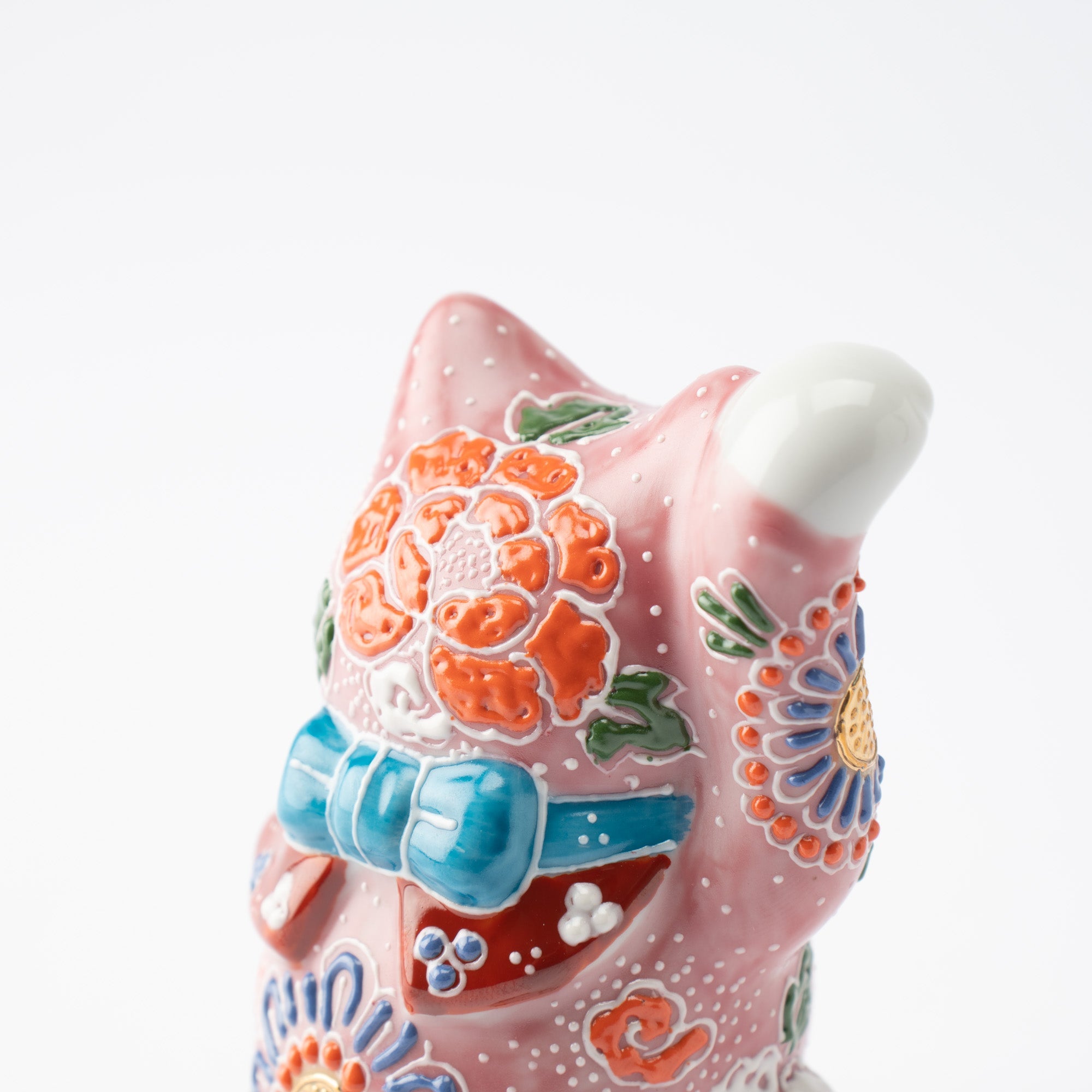
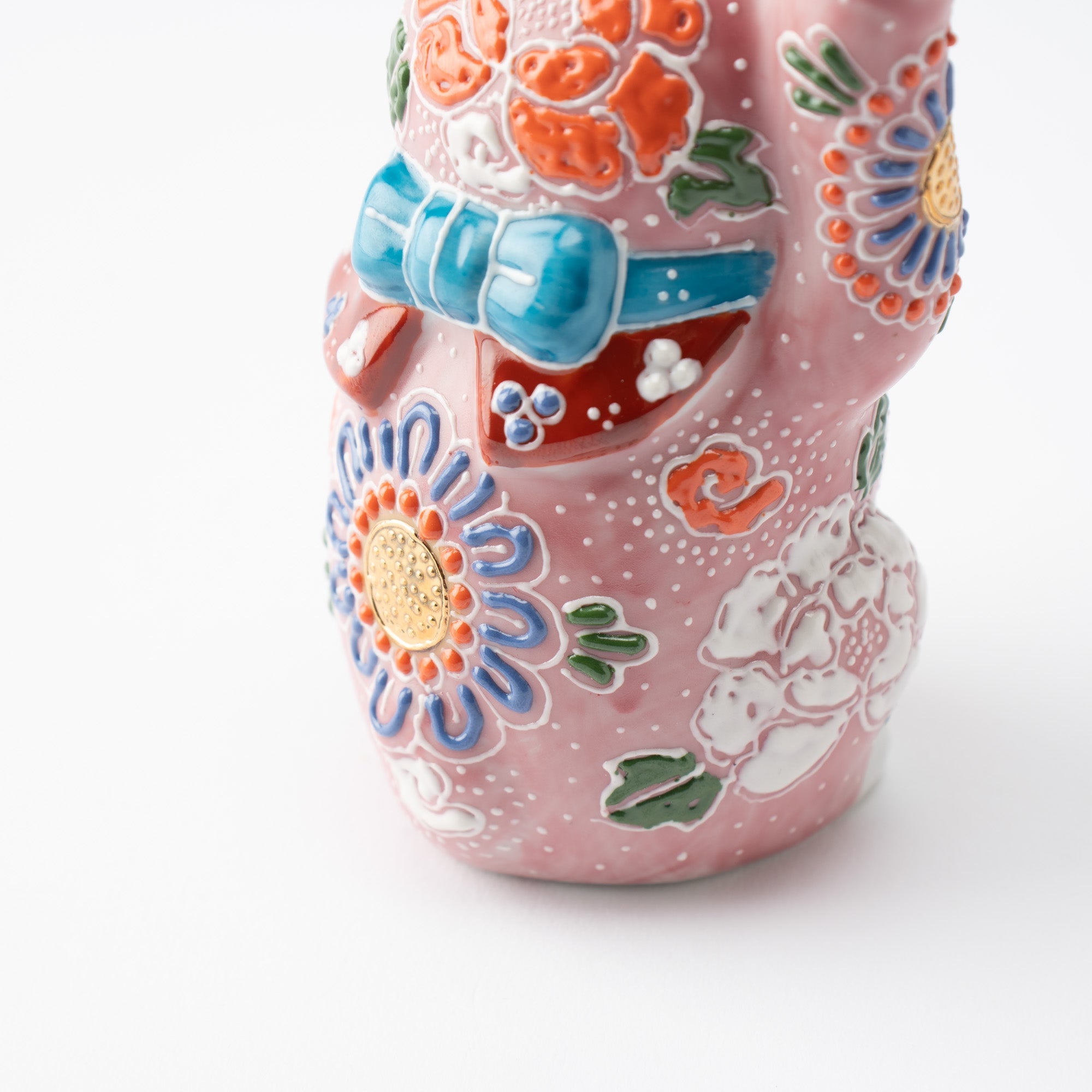
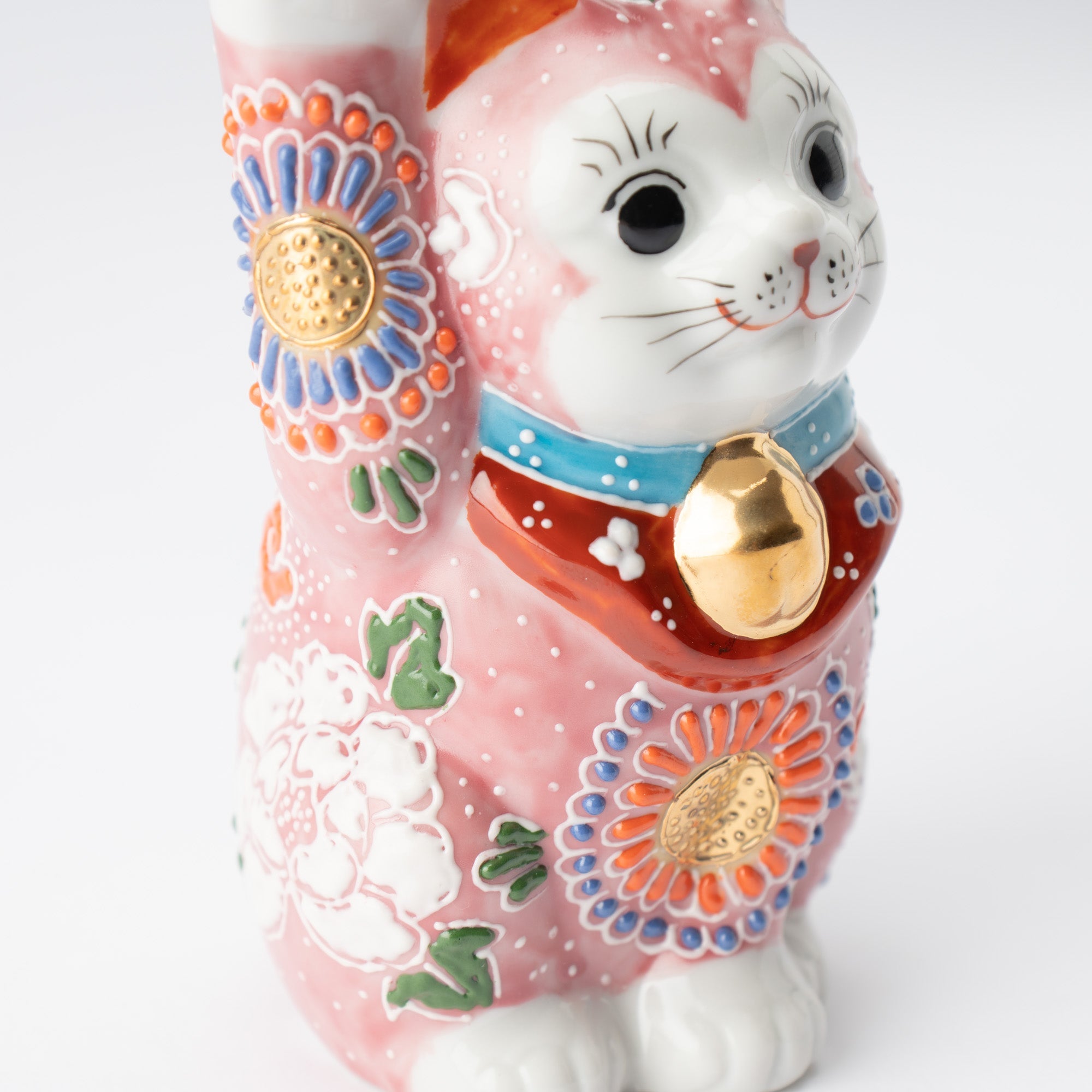
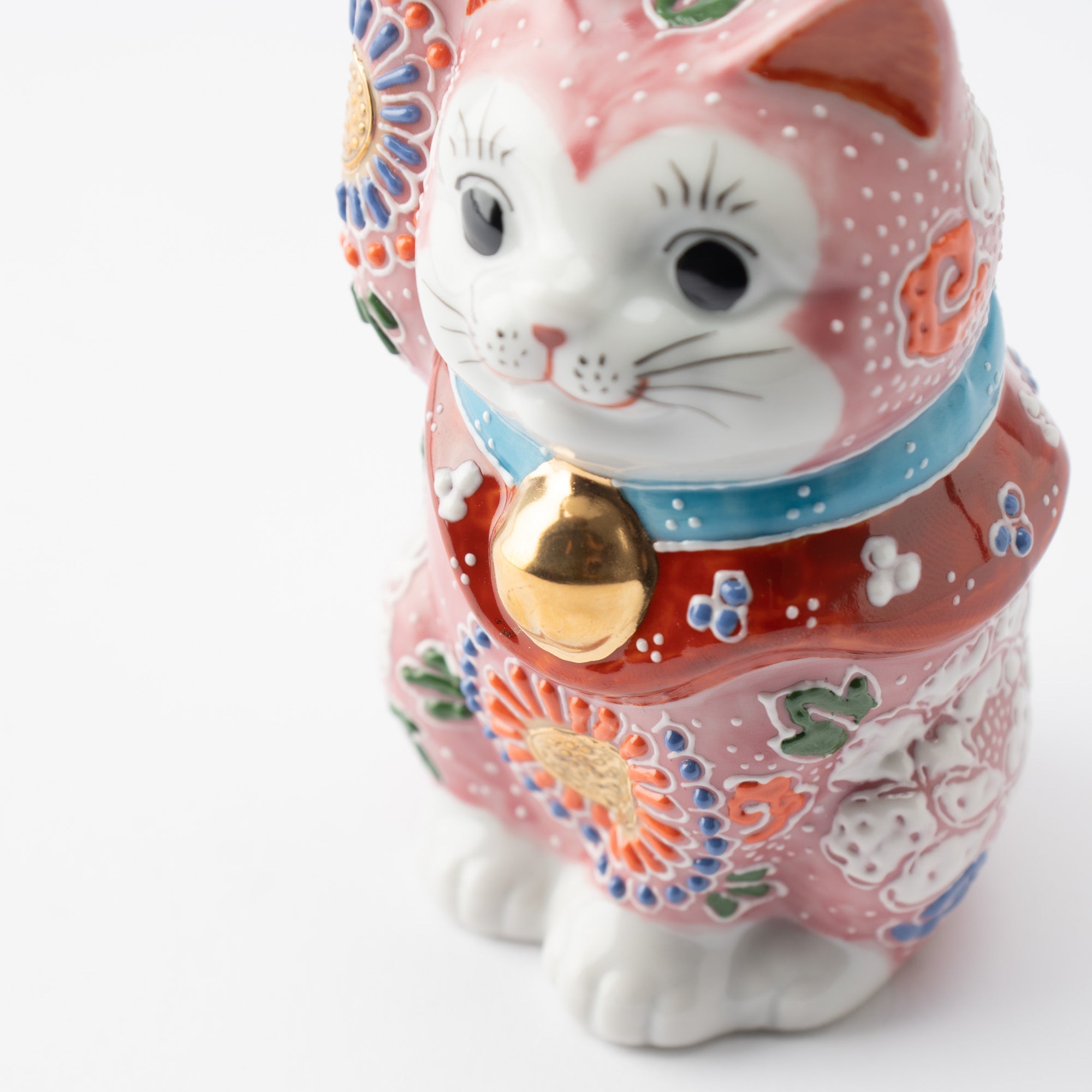
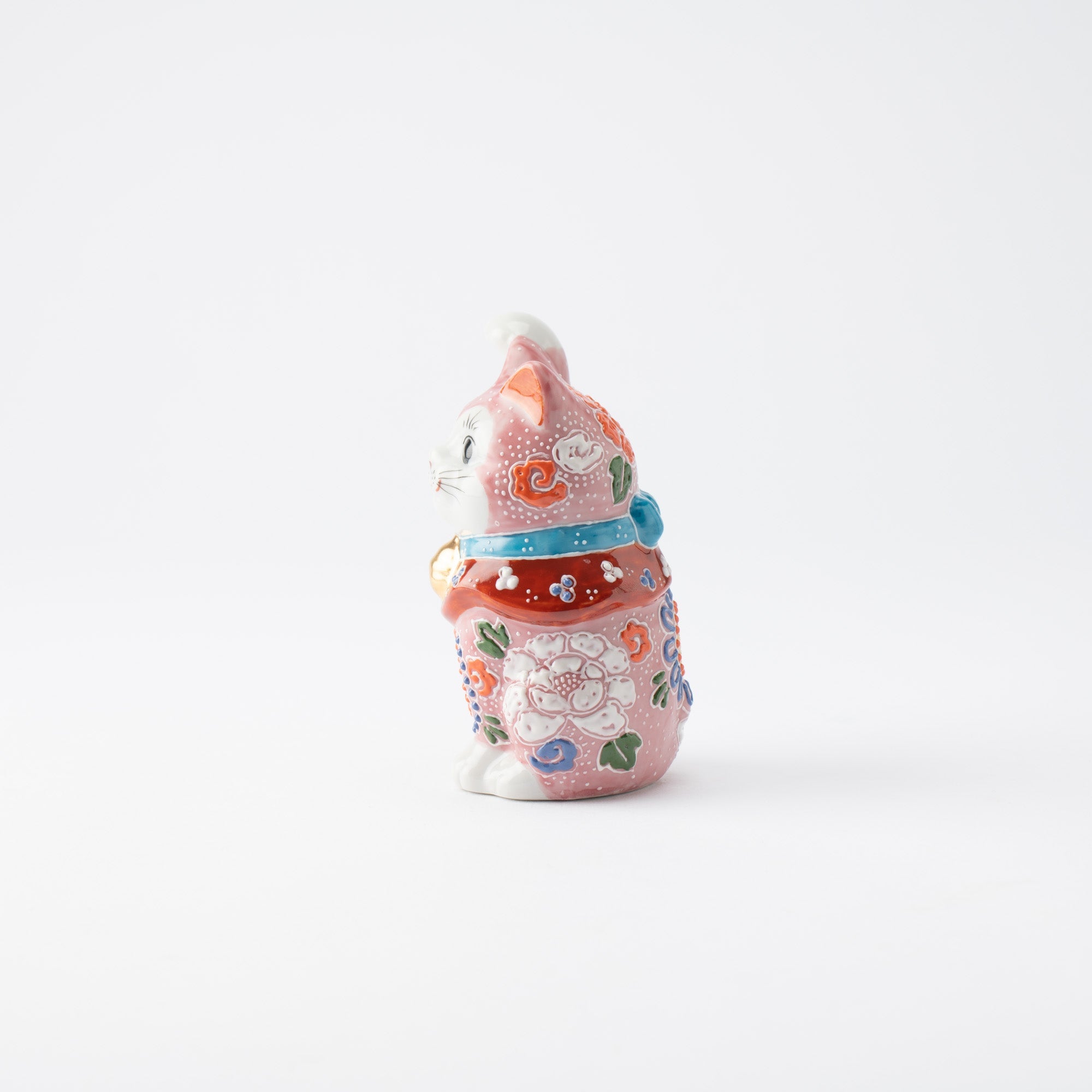
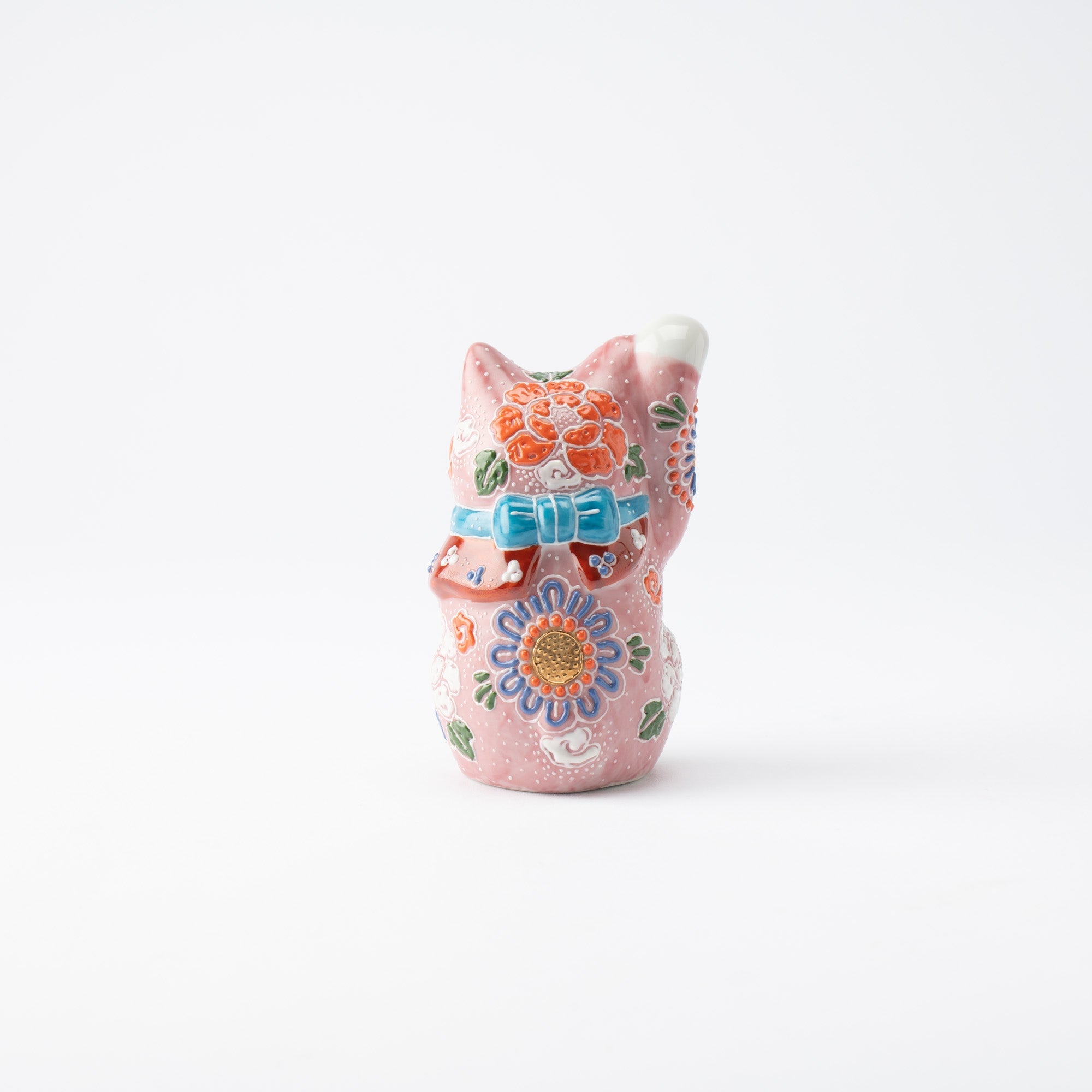
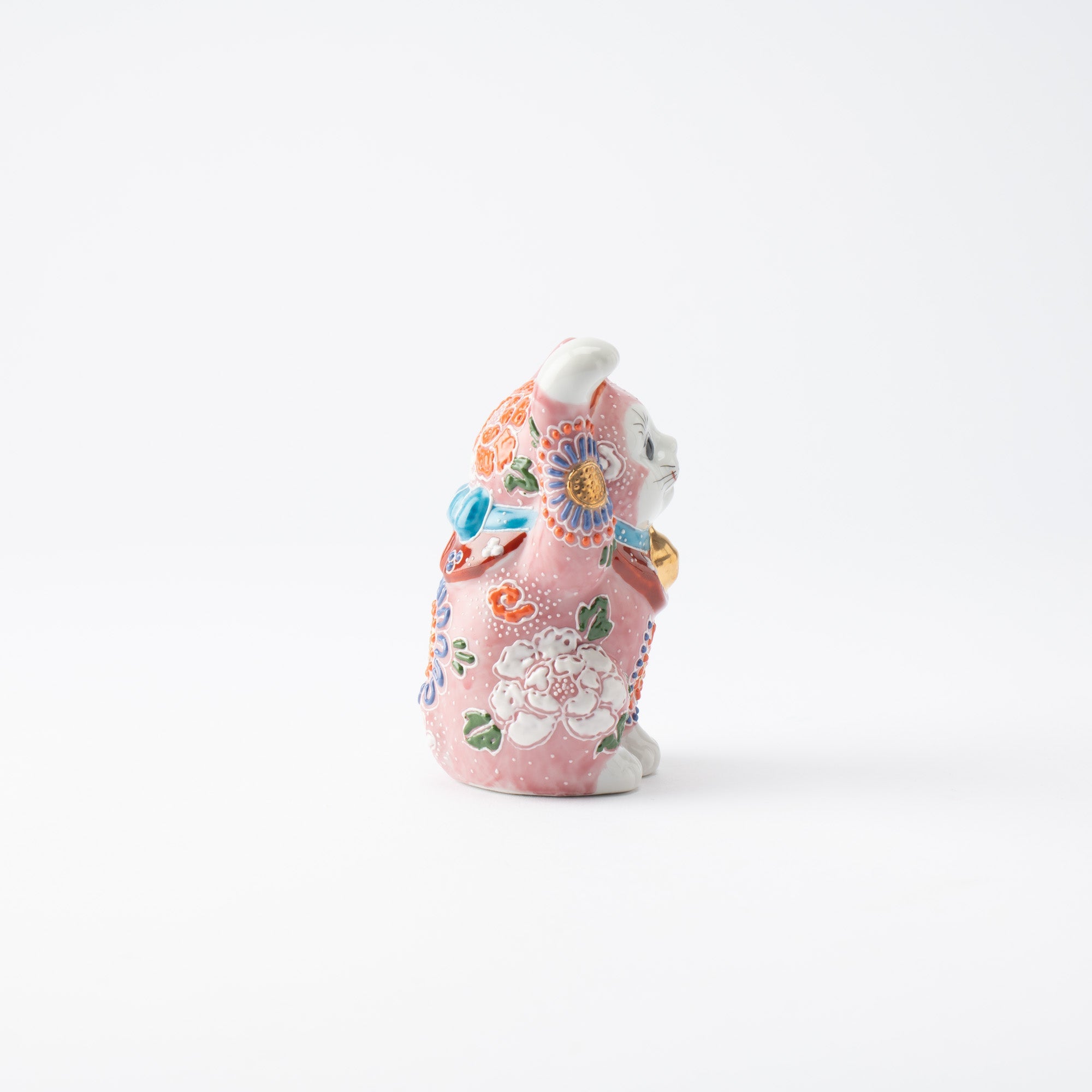
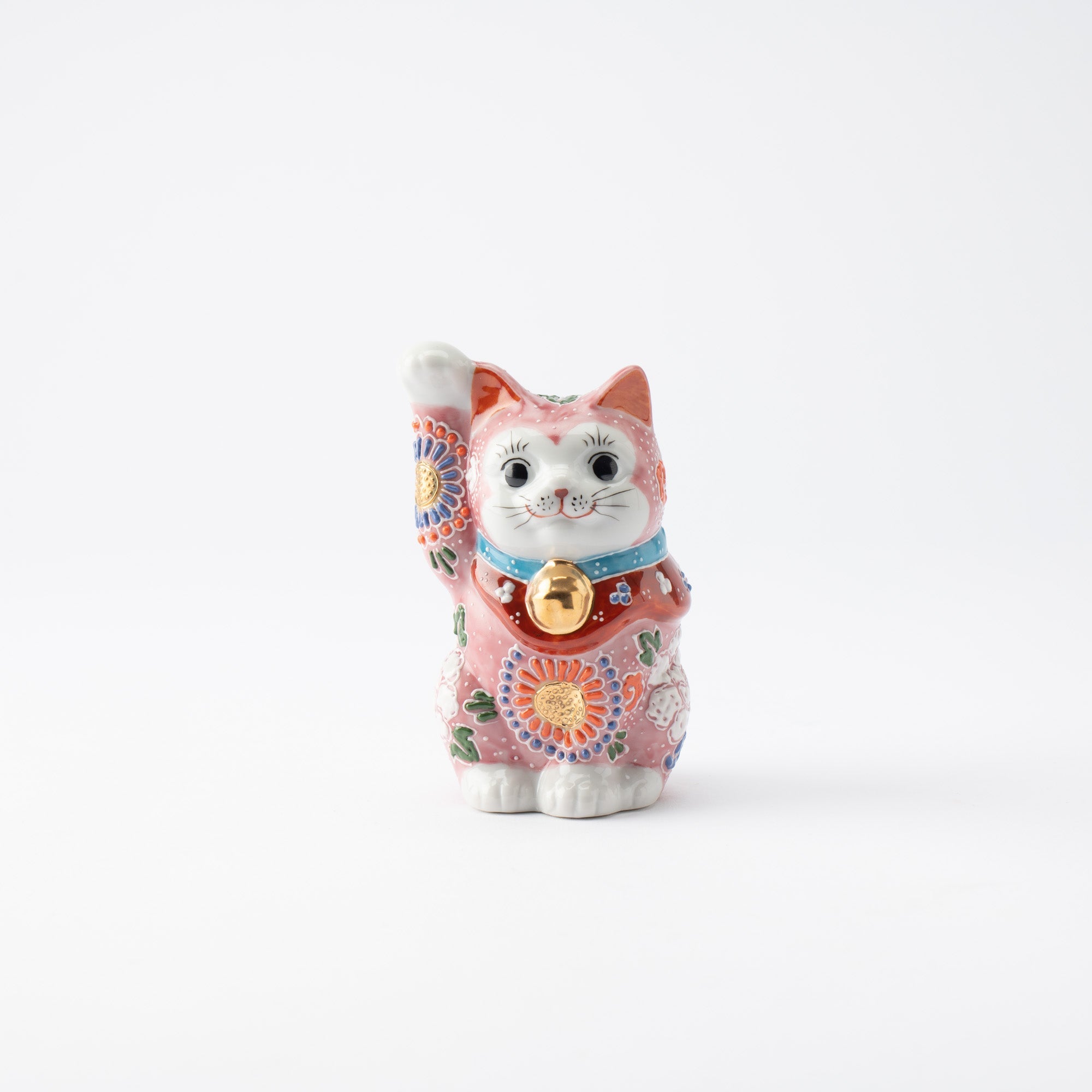
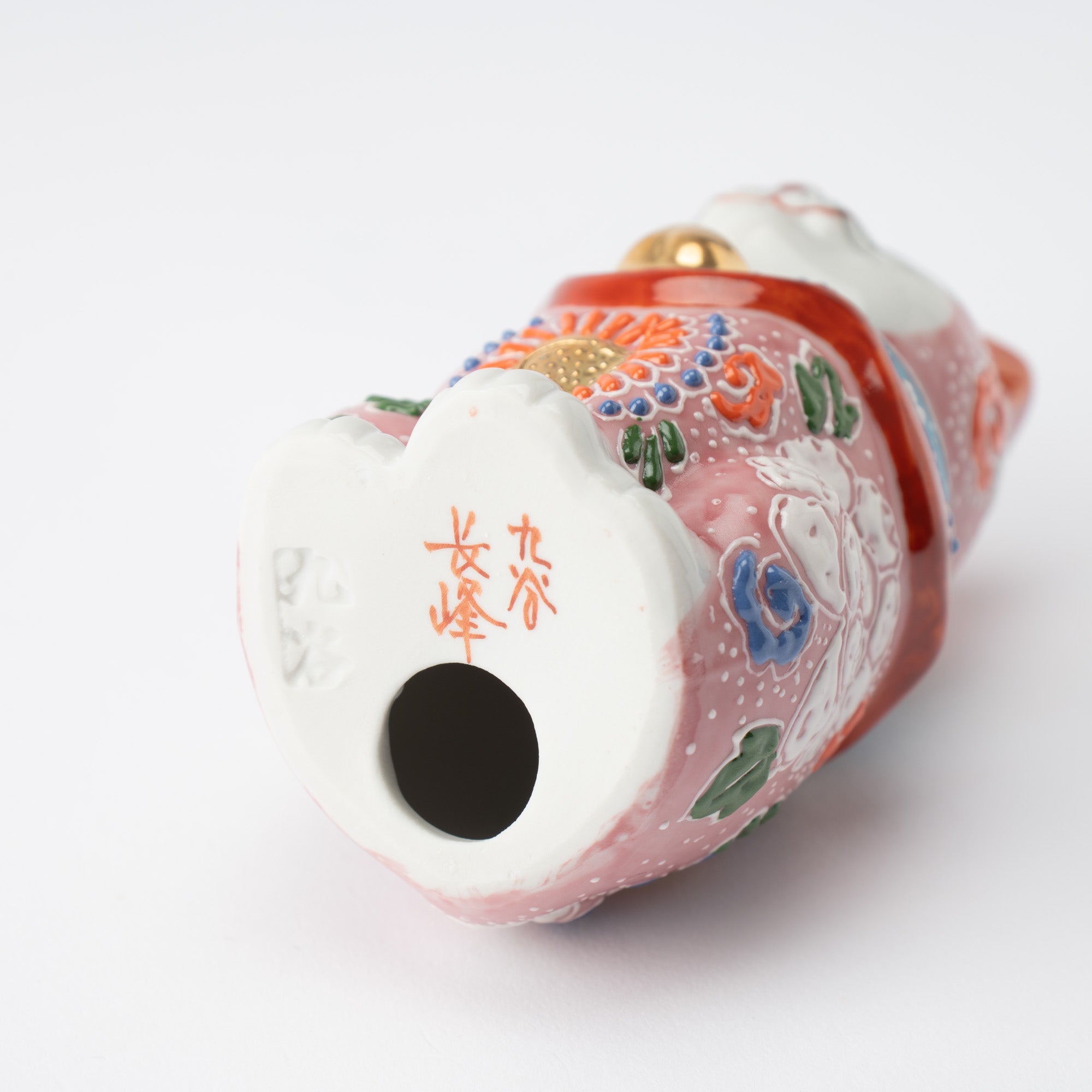
Pink Mori Lucky Cat
Estimated Shipping Widget will be displayed here!
This pink lucky cat, also known as maneki neko, is made using the advanced technique of Kutani ware.
In the past, Japanese farmers who lived with cats were believed to prosper, as the cats kept rats away from their crops. Over time, this association with good fortune gave rise to the lucky cat which is now widely known as a symbol of prosperity and wealth.
This pink beckoning cat is said to bring luck in romance. The color pink has long been associated with love and affection, making it a meaningful charm for matters of the heart.
Rooted in Japanese tradition and good fortune, this lucky cat, a Japanese figurine is a wonderful addition to your home decor and is believed to bring happiness to you and your loved ones.
DETAILS
| Quantity | 1 |
| Size | D 7.3 cm (2.9 in) x H 12 cm (4.7 in) |
| Material | Porcelain |
Maker / Brand
Chosaku Nishi, the founder of Choho Kiln studied the method of Mori-e with his brother Taikichi back in the Taisho period. Up till that time, this method was used to decorate flat surfaces. The brothers developed the idea of applying this method to Kutani Ware figurines as Chosaku had studied the basics of form, design and color mixing as a teenager. As it turned out, the Mori-e technique suited Kutani Ware figurines very well, and henceforth Mori-e became the mainstream decorating technique for Kutani Ware figurines.
The second generation Choho learned various techniques from his predecessor, trained many apprentices, and solidified the foundation of Choho Kiln. Today, Choho is the third generation of the Choho family, and is committed to preserving the tradition of Mori-e while seeking out new possibilities for this traditional technique.
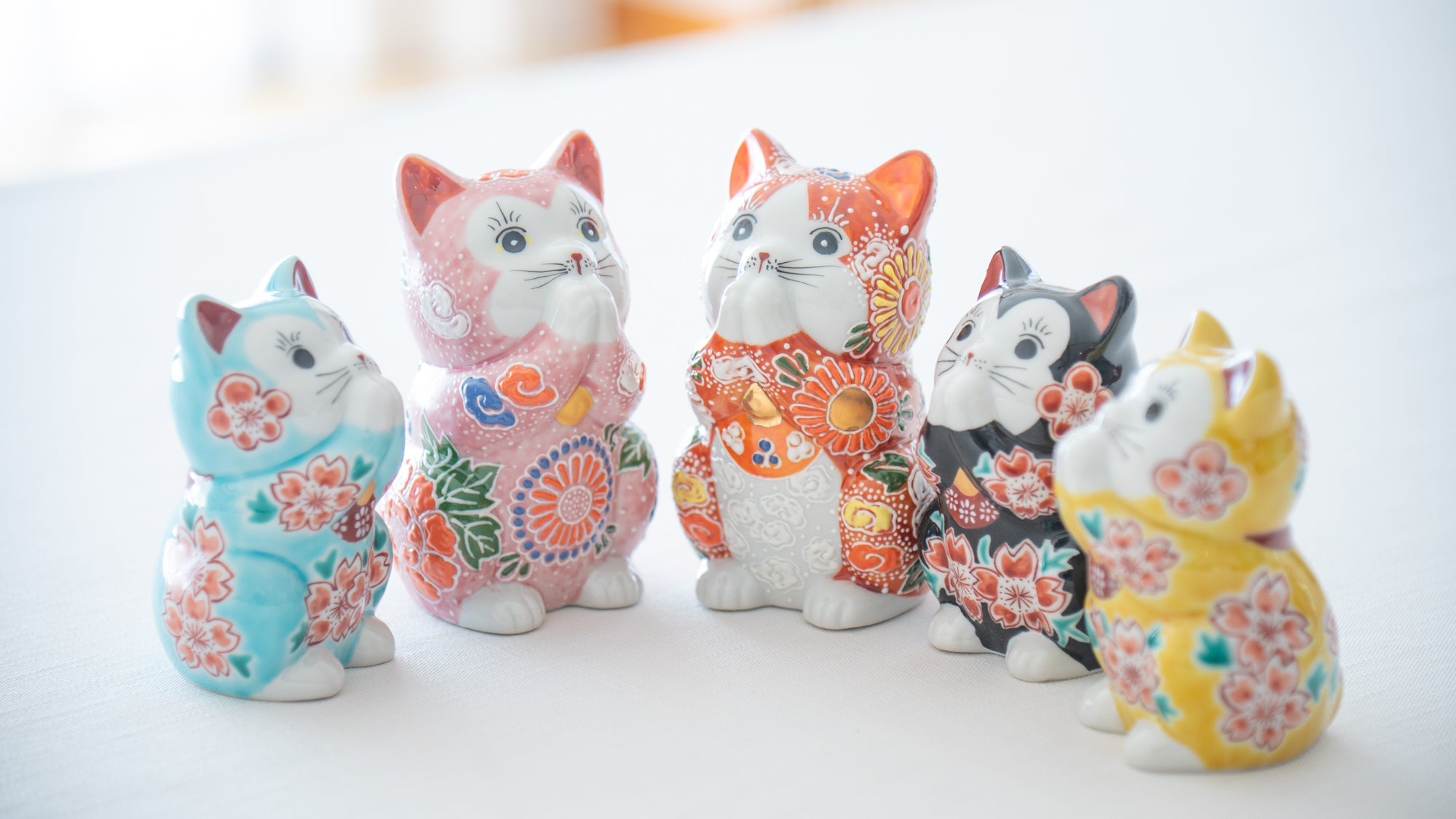
Crafts
Kutani ware is a pottery produced in the Kaga region of Ishikawa Prefecture, with a history spanning over 350 years. It is characterized by the heavy brilliance of the five colors of navy blue, red, purple, green, and yellow that are applied to the bold and daring lines. Its long history has evolved through the tireless efforts and enthusiasm of people who have sought innovation while maintaining tradition.
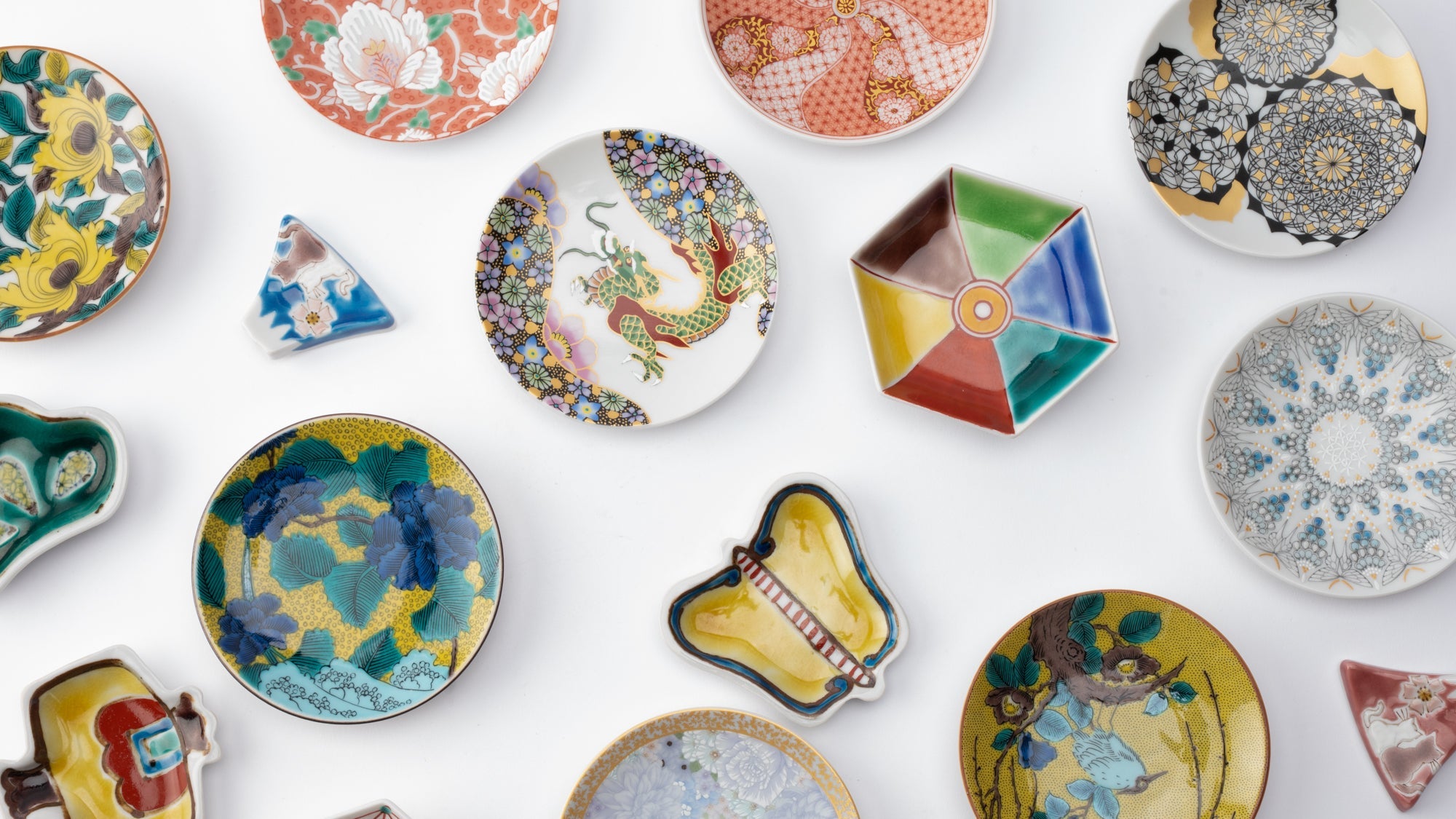
Choose options














Maneki Neko
Often referred to in English as lucky cats, maneki neko are iconic figurines in Japanese culture. Modeled after several folktales, they are said to beckon luck and, when placed at a storefront, potential customers. View the collection below to find a favorite maneki neko of your own to match your style and uplift your home or business.
